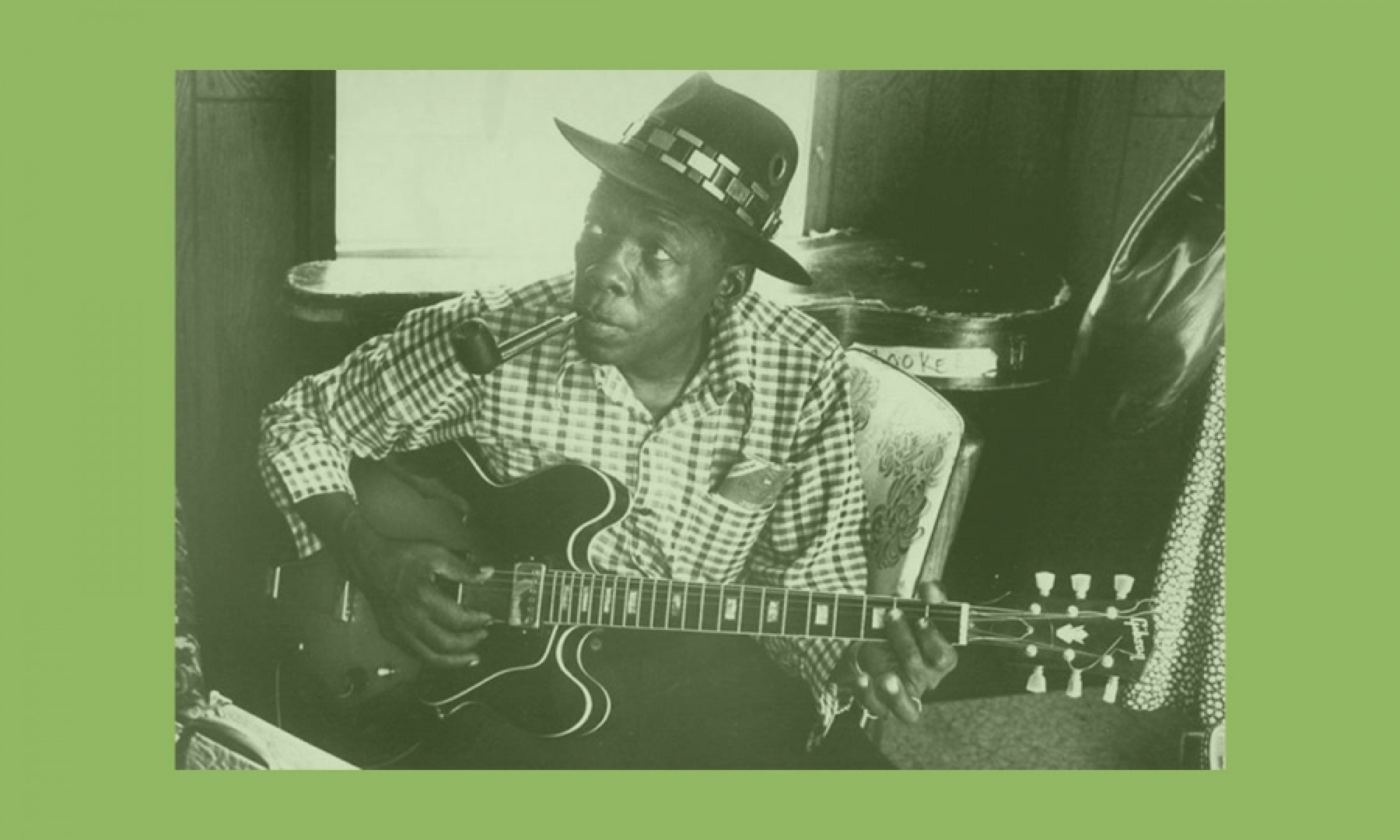
"John Henry"
By Greil Marcus
Track 11 – “John Henry” by John Lee Hooker
In 1943, John Lee Hooker, then in his mid-twenties, born in Mississippi, starting off as a professional bluesman in Memphis, arrived in Detroit to work in a Ford plant. When he could get in the door, he began playing in local blues clubs, and soon exchanged acoustic guitar for electric.
In 1949, Gene Deitch, a twenty-five-year-old Hollywood animated film maker—though his credits would include Tom and Jerry and Popeye, at the time he was probably best known, at least among the tiny community of blues and jazz collectors, for his “Cat” cartoons in Record Changer magazine—moved to Detroit to work in a film studio. He reconstituted the music lovers’ club he had had in L.A. One summer night in a nightclub in a black neighborhood he found himself listening to Hooker.
Deitch approached Hooker and asked if he’d play for a party in the all-white suburb of Royal Oak. Hooker was not a star, but he was on his way: the year before he’d cut his first single, “Boogie Chillen’” b/w “Sally May,” for the Modern label, and the first side would become a signature of his career until his death in 2001. But Deitch and his collector friends wanted authenticity, “the true country blues”: folk songs on folk guitar. “I don’t think anyone wants to hear that old stuff today,” Hooker said, but he said yes and Deitch got out his tape recorder.
Ranging from a ghostly “Two White Horses” to a moody “Jack O’ Diamonds” to pro forma versions of “Trouble in Mind” and “How Long Blues,” from a charismatic “Catfish Blues” to animal songs, the performances are archival gems—a glimpse into the half-world of the nineteenth-century African-American South and the half-world of John Lee Hooker. But “John Henry” isn’t even that clear. It isn’t clear what it is.
For three minutes, it’s as if Hooker has just woken up from a dream and is trying to remember it. The song as such is nothing but fragments, fragments of fragments. Lay that hammer down is a repeating theme, but as an idea, or simply an image, nothing so strong as the folk meaning of the theme, which is telling John Henry to save his life. For a long moment “John Henry” becomes a song about music. Hooker shoots out a reverberating RINNNGGG! in front of that old hammer, and soon people are coming from miles around to hear it, but then that too disappears. A gray, foggy rhythm floats over Hooker’s broken riffs and his tapping foot: nothing holds. The performance is so mesmerizingly abstract you’re not sure John Henry ever existed—not the man, but the song.
Abstraction is the key. It was an instinct inherent in twentieth-century art of every kind, a way of saying that facts, the so-called reality that everyone agreed on, were incapable of confronting or even describing the impossibilities of modern life, the race to the death between ideas and technology. Hooker’s “John Henry” can seem like the most primitive version of the song ever recorded, even the crudest.
In truth it’s the most modernist. This is Detroit, where the auto industry was about to complete its transition from war production to an explosion of supply-side production driven by status advertising that would catapult the country into its future—and Hooker to international fame, and Deitch to Prague, where he has lived since 1959.
This John Henry, or rather the man thinking over John Henry’s fate, sees it all coming. The more you listen, the farther the performance moves from the levee camps of the 1880s and the closer it moves to what Jackson Pollock, Charlie Parker, and Dizzy Gillespie were doing in the same year that John Lee Hooker was being paid to play folk music.
Return to the “Visions of the Blues” CD liner notes.
Order the 18th Southern Music Issue & CD: Visions of the Blues.


